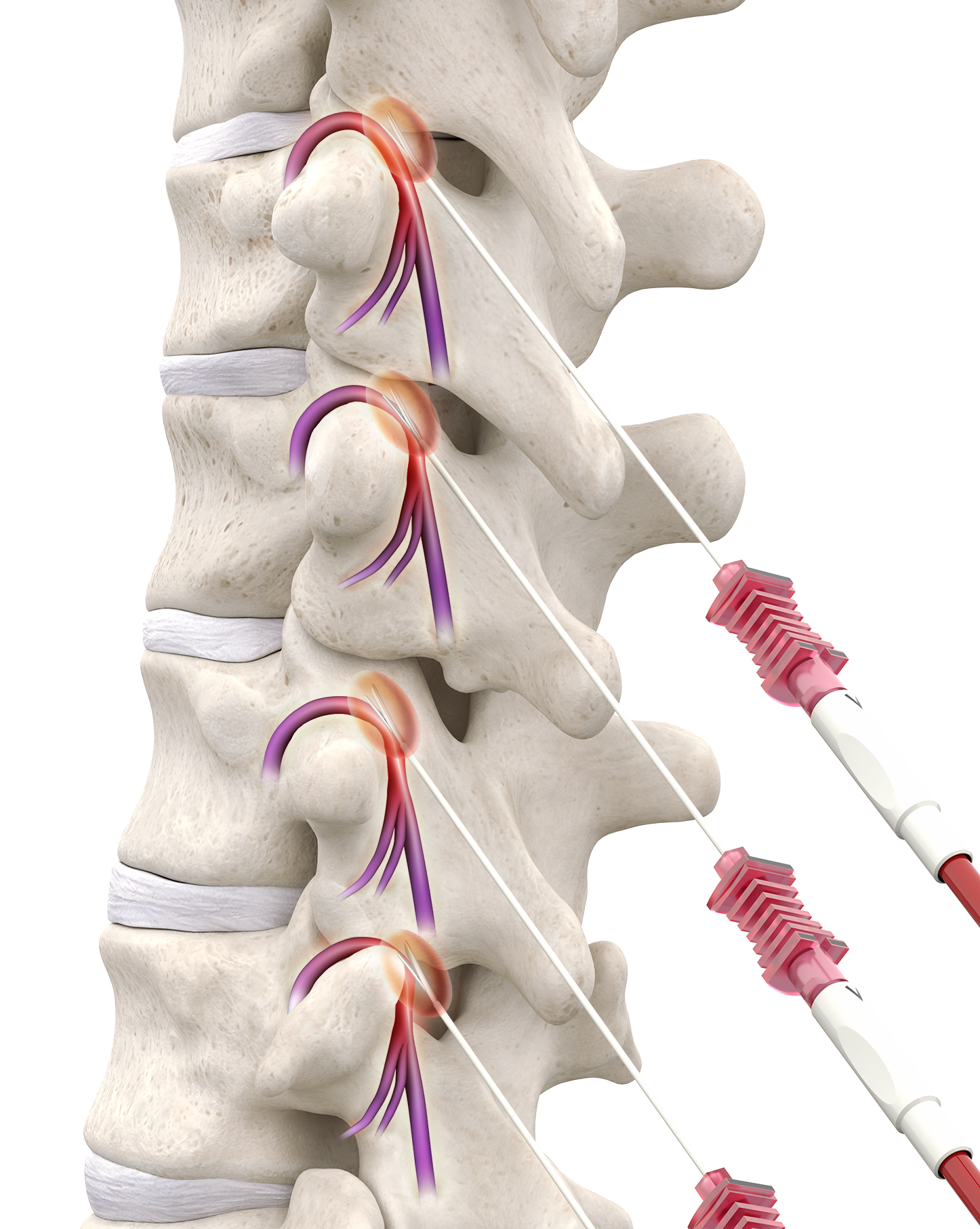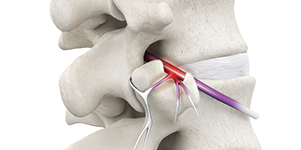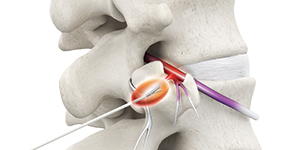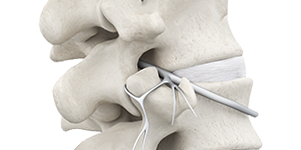
Radiofrequency ablation
A minimally invasive treatment for back pain
Radiofrequency ablation (RFA) is a minimally invasive procedure that can provide lasting relief to those suffering from lumbar or cervical facet joint pain.1234 In fact, selected clinical studies show that RFA significantly reduces pain for up to six months or longer in patients.45
Benefits
What to expect with radiofrequency ablation
View the step-by-step procedure

Before the procedure
Your doctor will confirm your diagnosis. If you are a good candidate for RFA, your doctor will ask you for the following information:
- Current medications, including herbal supplements and their dosages
- Known drug, iodine or latex allergies
- Current health conditions

During the procedure
RFA may be performed while you’re awake, but sedated. Your back is numbed with a local anesthetic. Using x-ray imaging, your doctor inserts a needle and electrode and guides them to the treatment area. A high-frequency electrical current then passes through the electrode, heating up and “lesioning” the sensory nerve.11

After the procedure
Your blood pressure and pulse will be monitored before you go home. You may feel sore or have pain in the treated area, but most people are able to return to work and normal activities within three days. Pain relief is typically experienced one to three weeks after RFA.1112 Since nerves can repair themselves, the pain may return. If this happens, talk to your doctor about if the procedure can be repeated.12

